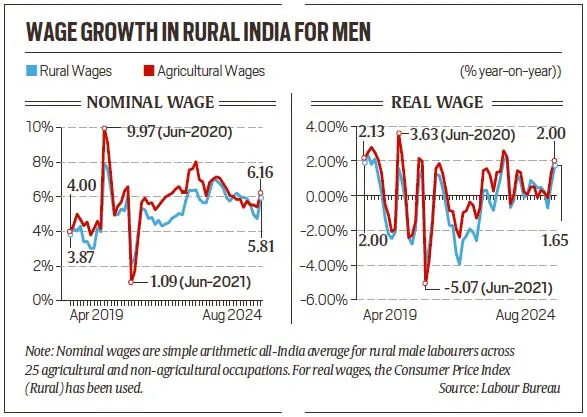Despite the high growth rate of Indian economy , the rural wages growth has been very minimal.

Rural consumption went up by just 0.5% y-o-y in the second quarter of FY24, the slowest pace recorded in eight quarters.
LFPR is the percentage of the population aged 15 years and above that is working or seeking/willing to work for a relatively long part of a particular year.
Sharp jump of 21.2 percentage points in the rural female LFPR since 2018-19.
If growth is coming from sectors or industries requiring fewer workers for every unit of output, then most of the income generated is from capital (i.e. profits of firms) as against labour (wages/compensation of employees).
The Indian Express | The paradox of stagnant rural wages
Quick Facts